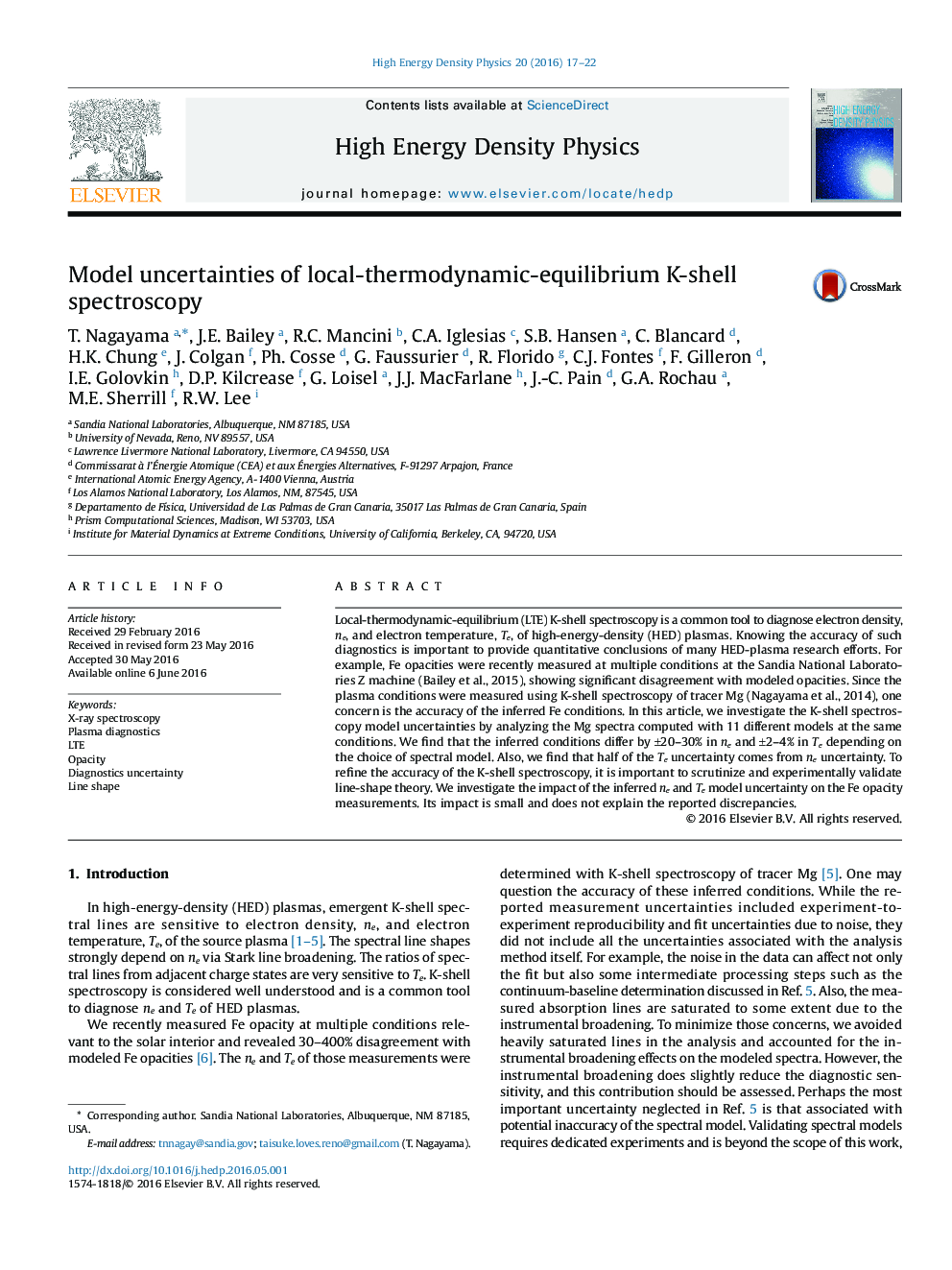| Article ID | Journal | Published Year | Pages | File Type |
|---|---|---|---|---|
| 1772278 | High Energy Density Physics | 2016 | 6 Pages |
Local-thermodynamic-equilibrium (LTE) K-shell spectroscopy is a common tool to diagnose electron density, ne, and electron temperature, Te, of high-energy-density (HED) plasmas. Knowing the accuracy of such diagnostics is important to provide quantitative conclusions of many HED-plasma research efforts. For example, Fe opacities were recently measured at multiple conditions at the Sandia National Laboratories Z machine (Bailey et al., 2015), showing significant disagreement with modeled opacities. Since the plasma conditions were measured using K-shell spectroscopy of tracer Mg (Nagayama et al., 2014), one concern is the accuracy of the inferred Fe conditions. In this article, we investigate the K-shell spectroscopy model uncertainties by analyzing the Mg spectra computed with 11 different models at the same conditions. We find that the inferred conditions differ by ±20–30% in ne and ±2–4% in Te depending on the choice of spectral model. Also, we find that half of the Te uncertainty comes from ne uncertainty. To refine the accuracy of the K-shell spectroscopy, it is important to scrutinize and experimentally validate line-shape theory. We investigate the impact of the inferred ne and Te model uncertainty on the Fe opacity measurements. Its impact is small and does not explain the reported discrepancies.
